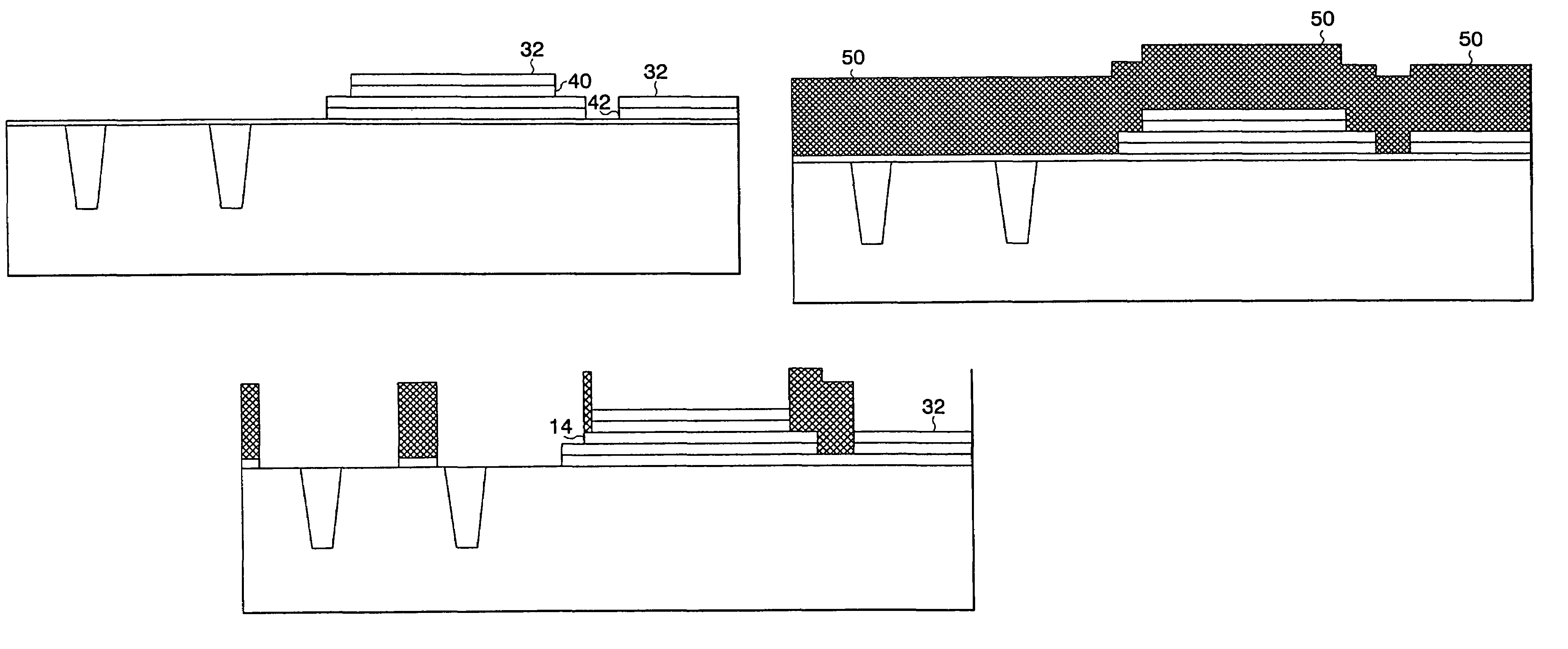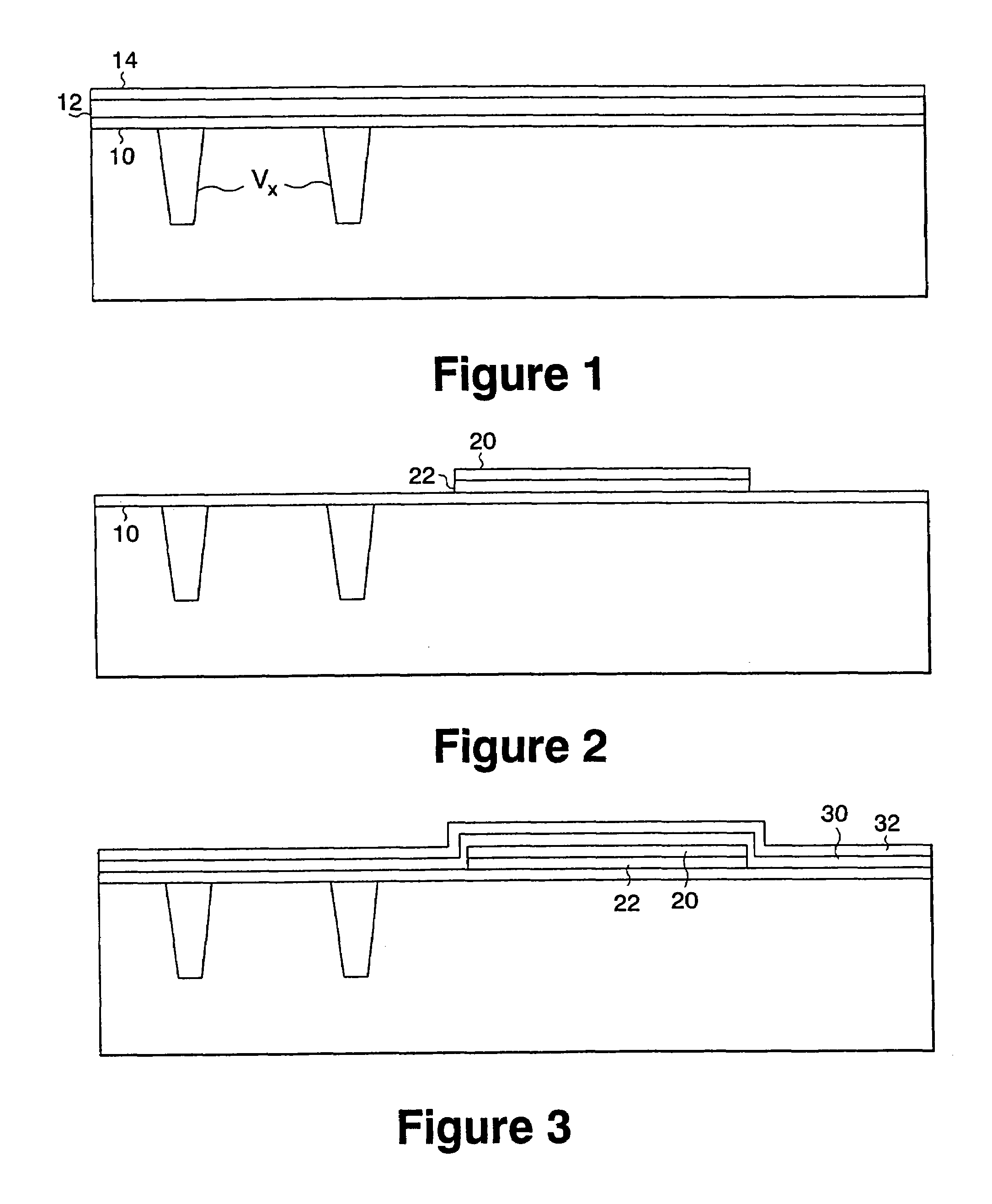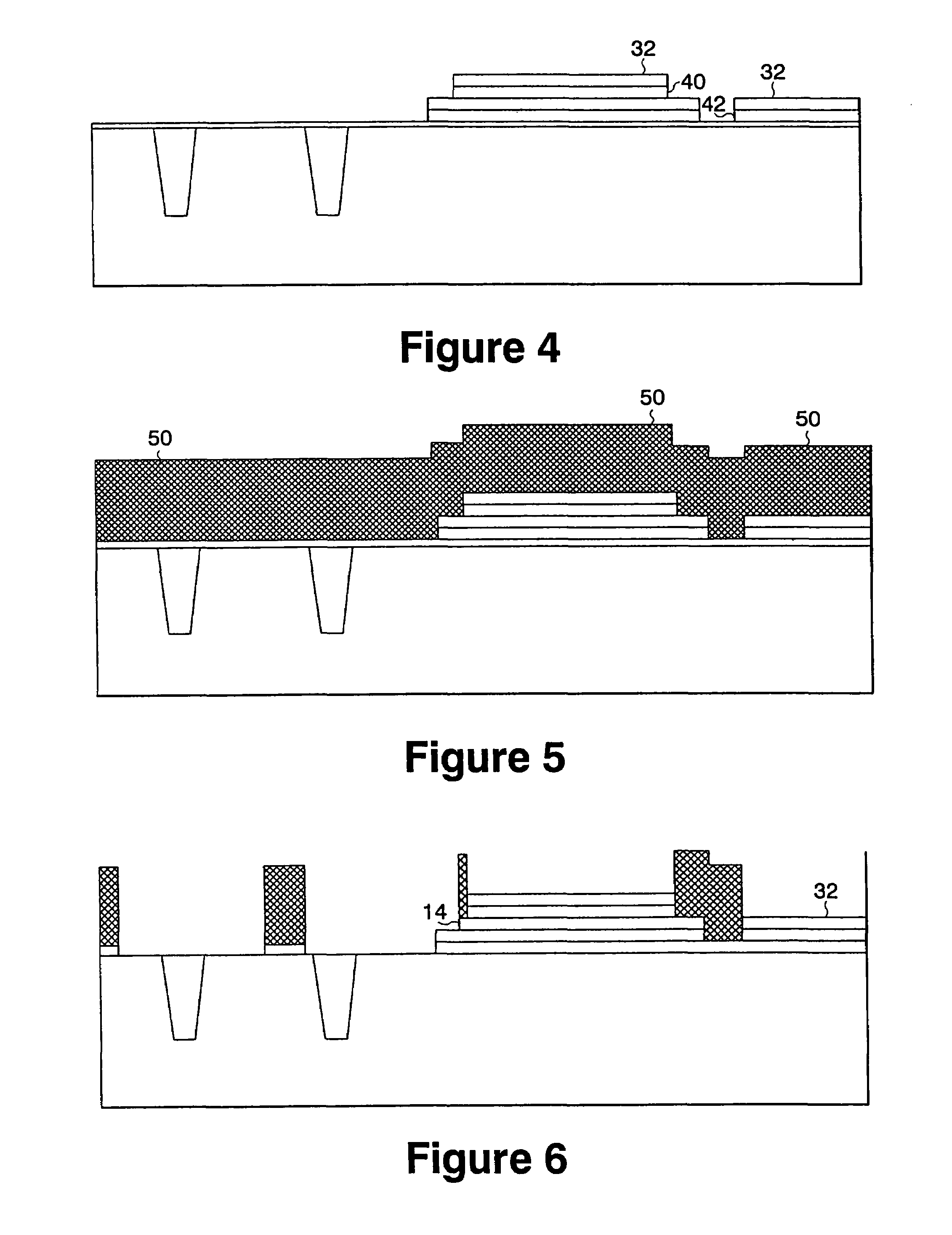Method of fabrication of MIMCAP and resistor at same level
a technology of resistor and mimcap, which is applied in the manufacture of capacitors, variable capacitors, fixed capacitors, etc., can solve the problems of adding to the interconnection delay of typical circuits, adding to the interconnection delay of oscillator circuits, and complex wiring, so as to reduce parasitics, reduce design complexity, and use efficient existing wiring levels
- Summary
- Abstract
- Description
- Claims
- Application Information
AI Technical Summary
Benefits of technology
Problems solved by technology
Method used
Image
Examples
Embodiment Construction
[0042]FIGS. 1–10 illustrate the sequential steps of a method for fabricating a MIMCAP (a capacitor (CAP) formed by successive layers of metal, insulator, metal (MIM)) and a thin film resistor at the same level.
[0043]FIG. 1 illustrates the structure, which could be at any via level and preferably at the lowest metal level (M1), after steps of depositing a 300A layer 10 of oxide insulation, then depositing a layer of metal 12 such as TaN on top of the layer of oxide insulation to form the bottom electrode of the capacitor, then depositing a layer of dielectric 14 such as tantalum pentoxide, silicon nitride or silicon dioxide on top of the layer of metal to form the dielectric of the capacitor. Vias Vx are also shown as being representative of a typical circuit.
[0044]FIG. 2 illustrates the structure after steps of lithographic patterning and etching the dielectric 20 and the bottom electrode 22 of the capacitor.
[0045]FIG. 3 illustrates the structure after steps of depositing a layer of...
PUM
| Property | Measurement | Unit |
|---|---|---|
| structure | aaaaa | aaaaa |
| coupling capacitance | aaaaa | aaaaa |
| thermal resistance | aaaaa | aaaaa |
Abstract
Description
Claims
Application Information
 Login to View More
Login to View More - R&D
- Intellectual Property
- Life Sciences
- Materials
- Tech Scout
- Unparalleled Data Quality
- Higher Quality Content
- 60% Fewer Hallucinations
Browse by: Latest US Patents, China's latest patents, Technical Efficacy Thesaurus, Application Domain, Technology Topic, Popular Technical Reports.
© 2025 PatSnap. All rights reserved.Legal|Privacy policy|Modern Slavery Act Transparency Statement|Sitemap|About US| Contact US: help@patsnap.com



